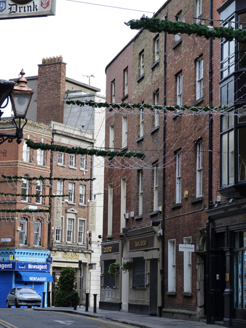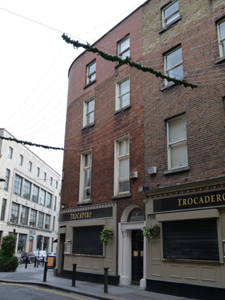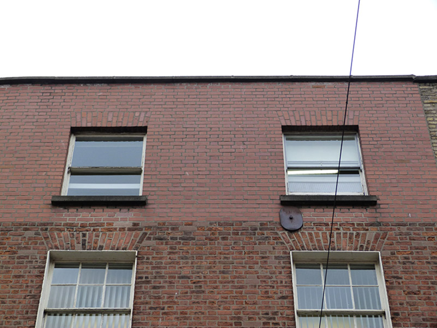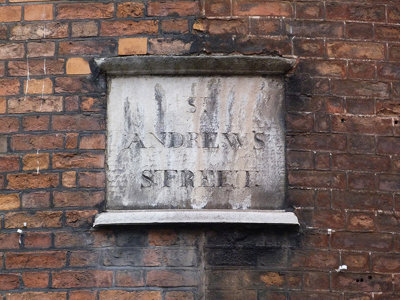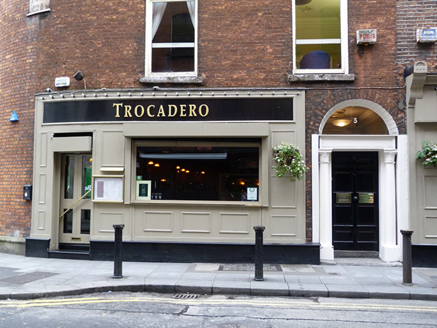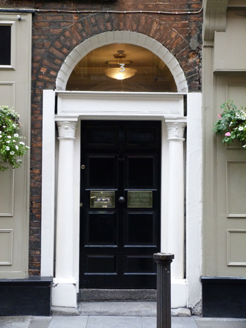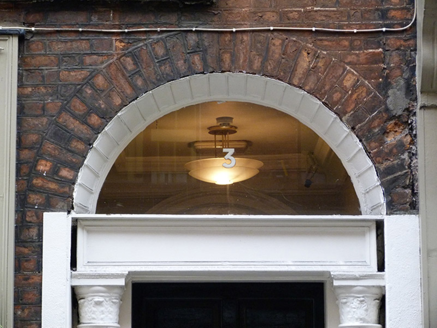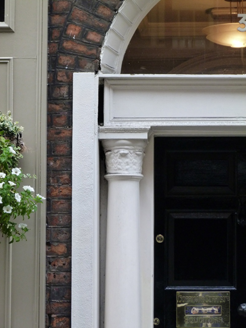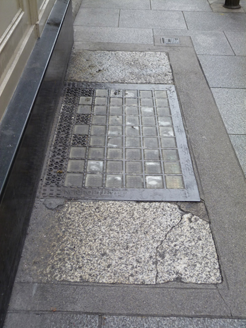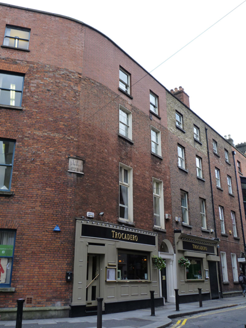Survey Data
Reg No
50910150
Rating
Regional
Categories of Special Interest
Architectural, Artistic
Original Use
House
In Use As
Restaurant
Date
1740 - 1780
Coordinates
315823, 233956
Date Recorded
14/10/2015
Date Updated
--/--/--
Description
Attached two-bay four-storey former house over concealed basement, built c. 1760, with recent shopfront to front (west) elevation. Located at bend in street line and one of pair of similar houses. Now in use as restaurant. M-profile pitched roof, hipped to south end, hidden behind refaced brick parapet with granite coping. Red brick walls laid in Flemish bond, top floor rebuilt to front elevation, with carved limestone name plaque reading 'St. Andrew's Street' to northeast end. Square-headed window openings with granite sills and raised rendered reveals, having elongated replacement casement windows to first floor, and timber sliding sash windows elsewhere, six-over-six pane to second floor and replacement one-over-one pane to top floor. Round-headed door opening with granite step and threshold to south end, having Corinthian columns supporting panelled frieze and cornice, and having replacement fanlight with fluted coving, and timber raised-and-fielded panelled door. Cellar light to pavement.
Appraisal
A significant mid-eighteenth-century former townhouse opening directly onto the street. It is enhanced by its Corinthian door surround, raised-and-fielded panelled door and street name plaque. The curved facade attractively addresses the change in angle in this part of the street. Part of a group of houses of similar date, located on the east side of St. Andrew Street, it contributes significantly to the architectural heritage of the area. The south end of St. Andrew Street was originally called Hog Hill and was laid out on land granted to Thomas Pemberton in 1643. While much of the street was rebuilt in the late nineteenth and early twentieth centuries, some early houses remain, such as this one, remain.
